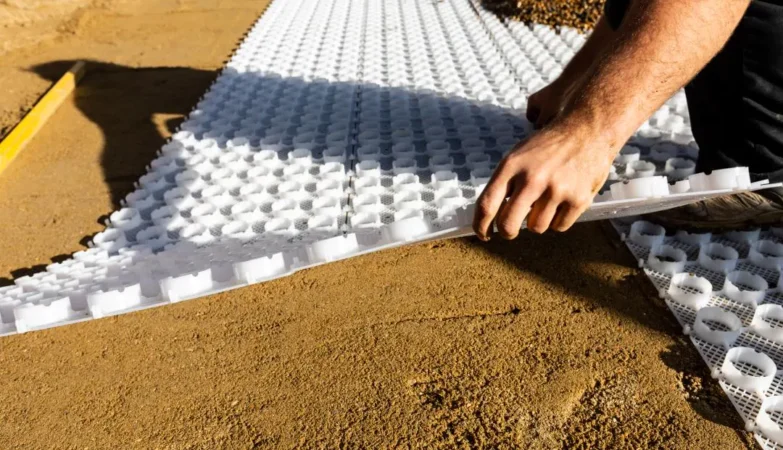Buying loose diamonds can be complex, but with the proper knowledge, you can make an informed, confident purchase. Learn how to navigate the process, from evaluating quality to choosing a reputable seller.
Buying loose diamonds is an exciting yet daunting experience for many. The journey to finding the perfect stone can be overwhelming, with countless options, terms, and factors to consider. Whether you’re looking to create a custom ring or simply invest in a high-quality diamond, it’s essential to understand the basics of diamond shopping. This guide will help you confidently buy loose diamonds, providing expert tips to ensure you’re making a safe and informed decision.
Why Buy Loose Diamonds?
When shopping for diamonds, buying loose stones provides a distinct set of benefits. Unlike diamonds set in jewellery, loose diamonds give you complete control over the design and mounting, ensuring you get precisely what you want. Whether you are planning to create a custom engagement ring or simply want to choose the diamond yourself, buying loose diamonds allows you to:
- Select a diamond based on its unique characteristics.
- Have the freedom to mount it in a setting of your choice.
- Ensure transparency in pricing and quality.
Many buyers also prefer loose diamonds because they offer better value for money. When purchasing a set diamond, you are often paying for the craftsmanship of the setting as well. With a loose diamond, you’re investing only in the diamond itself, which means greater flexibility in choosing a stone within your budget.
Understand the 4 Cs of Diamonds
Before you dive into buying loose diamonds, it’s crucial to understand the 4 Cs: Cut, Colour, Clarity, and Carat. These are the key factors that determine the diamond’s overall quality and price. Here’s a breakdown:
- Cut: The cut of the diamond refers to how well the stone has been shaped and faceted. This is one of the most important factors in determining a diamond’s brilliance. The better the cut, the more it will sparkle and shine.
- Colour: Diamonds come in various colours, from white to yellow or brown. The less colour, the more valuable the diamond. The GIA (Gemological Institute of America) grades diamonds on a scale from D (colourless) to Z (light yellow).
- Clarity: This refers to the presence of internal or external flaws (inclusions and blemishes). A higher clarity grade means fewer visible imperfections. Diamonds with high clarity tend to cost more.
- Carat: Carat weight measures the size of the diamond. Larger diamonds are rarer and thus more expensive, but size alone doesn’t guarantee quality.
Understanding these four Cs will help you evaluate diamonds more effectively and make better decisions. While carat weight is often the first thing people look at, cut is actually the most important factor in how a diamond looks.
Choose a Reputable Seller
Choosing a trustworthy seller is one of the most important steps in buying loose diamonds. Whether you’re purchasing from a physical store or online, doing your research is vital. Reputable dealers will provide certification for the diamonds they sell, ensuring that a recognised gemological laboratory, such as GIA or AGS, has evaluated the stone.
When selecting a seller, keep the following in mind:
- Check for accreditation: Look for certifications from recognised gemological organisations (e.g., GIA, AGS).
- Customer reviews: Search for feedback from previous customers to assess the seller’s reputation.
- Return policy and warranties: For peace of mind, make sure the dealer offers a fair return policy and warranties.
Online diamond retailers have become increasingly popular in recent years, providing more competitive prices and a wider selection. However, buying diamonds online requires extra caution. It’s essential to read reviews, understand the website’s return policies, and make sure the seller offers transparent and detailed information about their diamonds.
Understand Diamond Certification
Diamond certification is crucial when you buy loose diamonds. This process involves a gemological lab evaluating and certifying the diamond’s quality based on the 4 Cs. The certificate is essentially a report that provides detailed information about the diamond’s features, including its size, cut, colour, clarity, and other key characteristics.
The most reputable certification bodies are:
- GIA (Gemological Institute of America): Known as the industry standard, GIA is the most respected certifying body.
- AGS (American Gem Society): Another trusted lab, known for its expertise in grading cut quality.
- IGI (International Gemological Institute): Widely respected, though sometimes regarded as less stringent than GIA and AGS.
Be sure to ask the seller for a certification report from one of these trusted labs. This will ensure the diamond you’re buying meets your expected quality standards.
Setting a Budget and Understanding Pricing
Diamonds are an investment, and it’s easy to get carried away when browsing. Setting a budget beforehand can help you narrow your options and avoid overspending. Remember that the price of a diamond is influenced by its quality (the 4 Cs) and its size (carat). However, you can make your money go further by focusing on factors that matter most to you.
For example:
- You might sacrifice a bit on clarity or colour if you prefer a larger stone.
- Alternatively, if you’re after exceptional brilliance, prioritising the cut over size or clarity could be your best bet.
It’s important to note that diamond prices can fluctuate based on market demand, so buying during a sale or special offer might save you money.
Shop for Loose Diamonds Online or in-store?
While purchasing diamonds in person at a traditional jeweller’s store can offer certain benefits (like being able to see and feel the stone). When you buy loose diamonds online, it can also be a convenient and cost-effective option. Online retailers typically offer a larger selection, competitive prices, and easy access to certifications and detailed descriptions of the diamonds.
When shopping online, you can compare diamonds across different platforms. Many websites provide 360-degree views of the stones so you can get a closer look at their quality. Some online retailers also offer virtual consultations, where you can discuss your preferences with an expert, adding a personalised touch.
However, if you’re purchasing a diamond that is a significant investment or is intended for an engagement ring, visiting a physical store may still be a wise choice. This way, you can inspect the diamond in person and ensure it matches your expectations.
Avoiding Common Pitfalls
While buying loose diamonds offers many advantages, it’s important to be aware of common mistakes people make when shopping for them. Here are a few things to avoid:
- Not understanding certification: Always ask for the certificate and verify its authenticity. Never purchase a diamond without this essential information.
- Ignoring the cut: The cut of a diamond has the biggest impact on its appearance. Don’t focus only on carat weight.
- Overpaying for size: Larger diamonds are not always better. Focus on finding a balance between size and quality.
- Buying without a return policy: Only purchase from dealers offering returns or exchanges if the diamond doesn’t meet your expectations.
Conclusion
Buying loose diamonds can be a rewarding experience if you approach it with knowledge and caution. By understanding the 4 Cs, choosing a reputable seller, and paying attention to certification, you can confidently purchase a diamond that fits your needs and budget. Whether you’re looking for a sparkling engagement ring or a unique piece of jewellery, taking the time to research and evaluate your options will ensure you make a wise investment.




